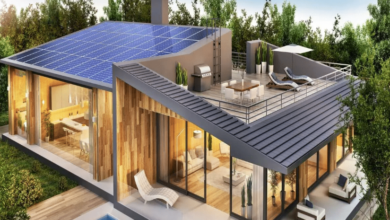Setting Up an Effective Work Area at Home

Designing a functional and comfortable home workspace has never been more essential. Whether you’re working remotely full-time or balancing a hybrid schedule, your work environment plays a crucial role in boosting productivity, maintaining focus, and supporting your well-being. At the heart of any effective home office is the right furniture—starting with an office desk that perfectly aligns with your needs.
Start with the Right Space
Not every home has a dedicated office, but you can still create a comfortable workspace. Choose a quiet, low-traffic area with natural light and few distractions. Avoid bedrooms or living rooms to keep work and personal life separate. If space is tight, get creative—a corner, under-stair nook, or even a converted closet can work as a functional workstation with the right planning and furniture. A little creativity goes a long way in designing the perfect home office.
Invest in a Quality Desk
Your desk is the centerpiece of your home office, so it’s important to choose one that fits your needs. Whether you prefer a compact design or a spacious executive model, there are plenty of office desks for sale to match any style or space. Think about your daily tasks—do you need room for dual monitors or just a laptop? Handle lots of paperwork? Look for features like storage, cable management, or adjustable heights to improve comfort and functionality. The right desk streamlines your workflow, keeps your space organized, and boosts productivity.
See also: Essential Video Editing Techniques for YouTube Creators
Choose a Comfortable Chair
Your desk may get all the attention, but your chair is just as important for a great workspace. An ergonomic chair supports good posture and reduces back and neck pain. Look for adjustable options that support your lower back, keep your feet flat on the floor, and align your elbows at 90 degrees. For smaller spaces, choose space-saving designs that fit under your desk without sacrificing comfort. The right chair can boost your comfort and productivity, even in a compact home office.
Organize for Efficiency
A cluttered workspace can lead to a cluttered mind. Stay organized by planning how to store your supplies, papers, and devices. Use shelves or wall-mounted organizers to maximize vertical space, and drawers, trays, or bins to keep items in place. Many desks now include built-in storage, making it easier to minimize clutter. Limit desk items to essentials like your computer, notepad, and lamp. A tidy desk promotes clearer thinking and better productivity.
Get the Lighting Right
Lighting plays a big role in your ability to focus. Place your desk near a window to benefit from natural light, which is ideal for concentration. If that’s not possible, use task lighting, like an adjustable desk lamp, to keep the brightness just right. Avoid harsh overhead lights that can cause glare and distractions. Good lighting reduces eye strain, boosts mental alertness, and improves your mood. Warm-toned bulbs create a cozy feel, while cooler tones promote focus and clarity.
Add Personal Touches
Your home workspace should reflect your style and personality. Adding artwork, plants, or photos can make it more inviting and inspiring. A comfortable space boosts productivity and reduces stress, but moderation matters—too many decorations can become distractions. Keep personal items minimal and well-placed to enhance your workflow.
Make It Tech-Friendly
Your home office should support your daily tasks seamlessly. Start with reliable internet and ensure you have enough outlets and chargers. Use cable organizers to keep cords tidy and a surge protector to protect your equipment. For video calls, maintain a clean, neutral background and good lighting to look professional and camera-ready.
Create a Routine Around Your Space
Once your workspace is ready, set a clear routine to maintain a healthy work-life balance. Stick to consistent start and end times, take breaks away from your desk, and avoid using your workspace after hours. These boundaries protect your personal time and help prevent burnout. With a well-designed workspace and structured routine, working from home becomes easier and more enjoyable.
Conclusion
Creating an effective home office doesn’t require a lot of space or a hefty budget—just thoughtful planning and smart decisions. Start with a comfortable and functional desk that suits both your space and work style, then enhance it with proper lighting, ergonomic seating, and thoughtful organization. A well-designed workspace at home not only boosts focus and productivity but also promotes a healthier work-life balance.




